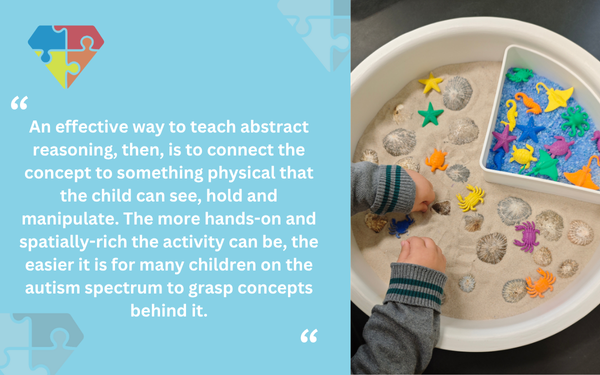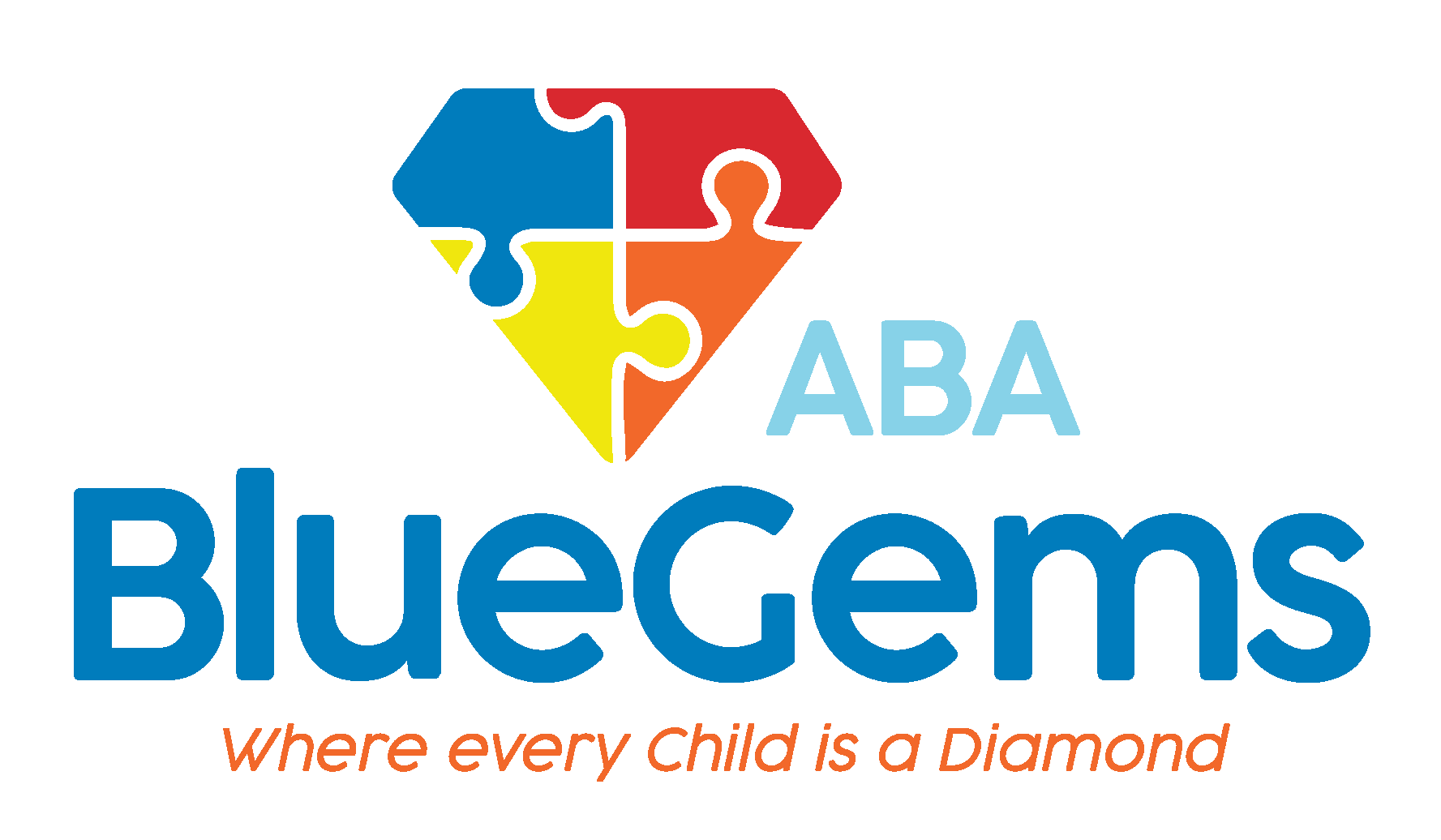Reinforcement for Teaching Abstract Reasoning
Abstract reasoning is a key aspect of overall cognitive development. It plays a crucial role in adaptive functioning, reasoning, problem-solving and more.
Thinking in abstract terms can be challenging for children, especially those who have autism spectrum disorder (ASD). Being able to understand a concept that they’re not able to observe directly can be hard for them to understand.
Yet, this makes it no less important that they are taught abstract reasoning, so that they can foster advanced cognitive skills and understand the world around them better.
Applied behavior analysis, or ABA therapy, has a number of techniques and strategies that can be used to teach abstract reasoning to children on the autism spectrum.
We’ll explore how that’s done and how it’s reinforced in this article.
Key Takeaways
- Abstract reasoning is critical for cognitive development and adaptive functioning.
- Children with ASD benefit from visual and physical teaching methods in ABA therapy.
- Transitioning from hands-on tools to visual representations fosters conceptual understanding.
- Positive reinforcement should target “thinking behaviors” rather than task completion.
- Consistency in reinforcement strengthens abstract thinking patterns.
Table Of Contents
What Role Does Abstract Reasoning Play in Cognitive Development?
There are many stages of cognitive development. In fact, it’s not just one skill but rather a rather wide skillset that, when taken together, helps a person learn, think, identify and interpret the world around them.
It involves taking information in and then processing it, learning how language and communication is used, and then understanding what happens all around us. To be able to navigate social situations, solve problems and make sense of the things that happen, these skills are essential.
Some of the cognitive skills we gain are through things or objects. For instance, knowledge can include being able to recall facts or name objects.
Abstract reasoning, by contrast, goes beyond just literal facts, helping people form generalizations and solve new problems even if they don’t have prior knowledge about something.
It includes understanding intangible concepts that are sometimes complex, as well as the ability to identify rules, relationships and patterns in information using various non-verbal and visual cues.
How Does ABA Therapy Teach Abstract Reasoning?
Children with ASD are often considered visual thinkers. This is why ABA therapy commonly integrates visual cues throughout strategies and treatment plans.
An effective way to teach abstract reasoning, then, is to connect the concept to something physical that the child can see, hold and manipulate. The more hands-on and spatially-rich the activity can be, the easier it is for many children on the autism spectrum to grasp concepts behind it.

Building blocks and puzzles are great tools ABA therapists can use to teach abstract reasoning. Children can learn to sort blocks or puzzle pieces by their shape, color or size, which can help them build abstract skills such as attributes and categorization.
Over time, the therapist can peel back the connection to the physical object and use 2D representations of it, such as a drawing of different shapes, sizes or colors. This helps the child take a concept they learned first with physical objects to manipulate and visualize images without needing the physical tool.
This approach to teaching abstract reasoning can be applied in play-based activities and through role playing, helping children to solve problems and grasp the “bigger picture” of certain concepts.
| Section | Description | Examples |
|---|---|---|
| Teaching Method | Use physical objects to build abstract concepts. Transition from tangible items to 2D representations. | Blocks, puzzles, drawings |
| Therapeutic Approach | Visual-based, play-oriented, and role-playing activities to enhance engagement. | Categorizing, problem-solving, storytelling |
| Reinforcement Target | Focus on reinforcing “thinking behaviors” rather than outcomes. | Identifying patterns, asking clarifying questions |
| Type of Reinforcement | Positive reinforcement tailored to child’s preference. | Praise, tokens, toys |
| Consistency Focus | Same reward system across skills and behaviors. | Token economy, consistent praise phrases |
How is Reinforcement Used for Teaching Abstract Reasoning?
Positive reinforcement is a major aspect of all ABA therapy, regardless of what skill or behavior is being targeted. When teaching abstract reasoning, reinforcement should take the same form, though it can be presented for different reasons.
Consistency in positive reinforcement is key. This means that the reward the child is given — whether it be a toy, extra praise or a token they can exchange for something later — should be the same for all targeted skills and behaviors, and that the reinforcement scheduled should be the same.
When it comes to teaching abstract reasoning, though, the things that should be reinforced aren’t necessary successful completion of tasks — simply because there aren’t always direct tasks associated with this teaching.
Reinforcement is more direct when teaching practical skills such as learning colors, for example, as a reward can be given when a child correctly identifies the color green on a card.
For abstract thinking, the reinforcement should come when they display what are known as “thinking behaviors.” This can include if they suggest a different solution to a problem, if they correctly identify patterns or if they ask a clarifying question.
All of these things are examples of the child displaying abstract reasoning. By rewarding the child when they do this, the ABA therapist can reinforce that behavior so the child is more likely to repeat similar behaviors and lines of thinking in the future.
Blue Gems ABA Helps Children with ASD Build Cognitive Functioning
Abstract reasoning is a big part of understanding how the world around you works. For children with autism, learning this can be challenging, since it isn’t always revolved around a physical object.
At Blue Gems ABA, our experienced team of therapists helps children on the autism spectrum build cognitive functioning skills such as abstract reasoning. We follow ABA therapy principles to help guide us to do so, as we target specific skills and behaviors based on each child’s unique strengths, challenges and preferences.
To learn more, please contact us today.
Frequently Asked Questions
-
- Q: Why is abstract reasoning important for children with autism?
A: It helps build problem-solving and generalization skills crucial for navigating daily life.
- Q: Why is abstract reasoning important for children with autism?
-
- Q: How do ABA therapists teach abstract reasoning?
A: By using tangible tools like blocks and puzzles first, then moving to visual cues and role-playing activities.
- Q: How do ABA therapists teach abstract reasoning?
-
- Q: What types of behavior should be reinforced during abstract reasoning lessons?
A: Behaviors such as suggesting new ideas, identifying patterns, and asking thoughtful questions.
- Q: What types of behavior should be reinforced during abstract reasoning lessons?
- Q: Should reinforcement only be provided when a child gets the answer right?
A: No, reinforcement should focus on the process and demonstration of abstract thought, not just correctness.




